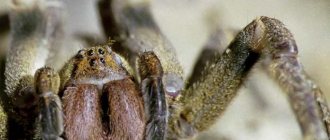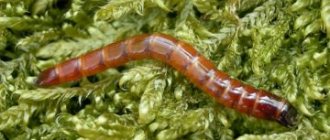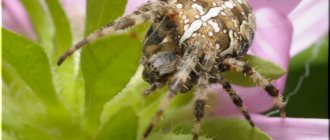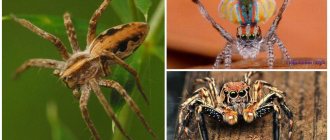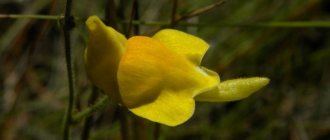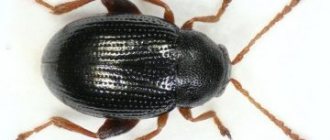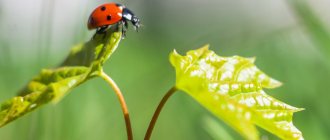When choosing an orchid in a store, flower lovers often look only at the condition of its leaves, flowers and stem. But it is also important to carefully check the soil. It is in the soil that plant pests usually settle, which include: various bugs, white larvae, insects with wings, aphids, spider mites, and scale insects. The negative consequences of the life of parasites on orchids are various - from suppression of growth to absolute death. If the color of the leaves has changed to yellow, and they have begun to wither and curl, or they are shrouded in an adhesive coating, or there are irregularities, holes and dots on them, there is a possibility that the plant has been attacked by parasitic insects.
Reasons for the appearance of harmful insects on leaves and other parts of the flower
As a rule, the appearance of uninvited guests occurs for several reasons:
- Purchasing a diseased flower. Infection can occur in a greenhouse or in a flower shop, and go unnoticed upon purchase.
- Infected substrate or equipment. The equipment needs to be processed, and the soil must be purchased, because it undergoes special treatment.
- Close proximity has a beneficial effect on the movement of pests from one pot to another.
- Summer maintenance in an open area (balcony or summer cottage).
Ticks
There are several types of ticks:
- Root (bulbous). The adult insect is white, the larvae and eggs are yellow. The danger of this pest is that it is almost impossible to notice. This insect penetrates the roots, sucks out the juice and deprives the flowers of nutrition. At an advanced stage of the lesion, the roots have only a shell with voids inside. The bulb mite is a carrier of a fungal disease.
- False arachnoid (plate beetle). This is a red or red colored insect that feeds on the sap of leaves. The affected foliage first turns gray, then turns brown and falls off.
- Red spider. This is a small red spider that weaves foliage with a web. It sucks juices from the tissues, causing the leaves to turn yellow, curl and fall off. When the parasite invades, orchids do not form flower buds.
Fighting methods
For effective control, the root system is removed, dead parts are removed and the plant is watered with Fitoverm, then the plant is transplanted into a new sterilized substrate. The aerial part is also treated twice with the same product at intervals of 7 days.
To cure a plant with a red spider mite invasion, the flower should be treated with phytoverm. Spray 3 times every 5 days at a temperature not lower than 30°C. To prevent its reappearance, high air humidity is provided in the room.
To exterminate the flat beetle mite, the flower is sprayed with the same product and according to the same scheme as in the previous case.
How to distinguish a disease from insect damage?
Even when all recommendations for maintenance and care are followed, the orchid may become depressed. By carefully examining the flower, you can determine what caused it:
- Yellow spots on the leaf or white dots – powdery mildew, rot, pests.
- Droopy foliage – aphids, mites, bacterial spot.
- Sticky (white) spots on leaves - aphids, bacterial spot, powdery mildew.
- Black, darkened leaves - rot, spider mites due to improper watering in cold weather.
- Soft, wrinkled or rotting foliage - pests, fusarium rot, bacterial spot.
- Leaves turn red or curl due to pests and rot
- The edges turn black – bacterial spotting.
- Mold or silvery plaque – pests, gray rot, powdery mildew.
- White bugs or fungus on the leaves are pests due to frequent watering or too high humidity.
Photo
In the photo below you can see what white furry bugs look like on orchid leaves:
These photos show small black orchid pests:
How to detect parasites?
Insects that parasitize a flower are often very small in size, and besides, they are almost always hiding. There are two ways to lure and determine who has moved into the pot:
- Place a piece of apple, potato, carrot or other similar delicacy on the ground and leave for 3-5 hours. After this time, the uninvited guest can be detected and diagnosed on the bait.
- Place the orchid pot in a container of settled water at room temperature. After about 5 minutes, the pests will begin to climb to the surface.
Shields
In appearance, these insects somewhat resemble a match head. They parasitize pseudobulbs, leaves and stems. Small scale insects, about 0.2 cm in size, during their life processes secrete sticky droplets in which sooty fungus multiplies. Dark spots on the surface of the plant indicate the presence of a parasite.
Control measures:
- Manually remove the pest from the flowers.
- Spray the plant with Fitoverm or Actellik. Repeat treatment after 7 days.
- Move the flower to another pot with a new substrate, first wash the roots with phytoverm.
Scale on an orchid
How to deal with different types of parasites?
Scale insect and false scale insect
Scale insects got their name from the presence of a waxy shield covering the body. The diameter of the insect reaches up to 5 mm in diameter. False scale insects are visually similar to their relatives, with the exception of a dense protective shield. Both species reproduce by laying eggs.
Adults are fixedly attached to the upper part of the leaf, and young ones move freely from the diseased flower to the healthy one. They parasitize the entire surface, feeding on plant sap. The main signs of damage are small brown-brown growths on the surface of leaves and shoots.
The affected orchid must be urgently quarantined, isolated from other flowers, and its neighbors must be carefully examined for infection.
False scale insects succumb to insecticides more quickly due to the lack of a protective shield. Pest control products:
- contact - "Permethrin";
- intestinal - "Aktara", "Arrivo", "Aktellik";
- systemic - “Methylmercaptophos”, “Phosfamide”.
Traditional methods of treatment with a soap-alcohol solution or garlic tincture have also proven themselves positively.
Video about fighting scale insects on an orchid:
Mealybug
A whiskered insect with an elongated, oblong (3-6 mm) fluffy white body. They are dangerous when they appear out of nowhere and may not appear for a long time. A plant affected by a mealybug will have leaves that turn yellow and fall off. It feeds on phalaenopsis juices, and fungal or bacterial infections can develop at the bite sites.
The insect does not tolerate high temperatures well, so using a hot, 40 degree shower can bring positive results. To combat the pest you need:
- Remove all dried leaves and scales.
- Inspect the plant twice a day for the presence of parasites.
- Spray the preparation (“Fitoverm”, “Vermitek”, “Aktara”, “Calypso” or “Aktelik”) on the substrate and the lower part of the flower according to the instructions. Repeat spraying after a week.
Video about fighting mealybugs on an orchid:
Thrips
Miniature insects with wings, approximately 1.5 mm in length. Gray, black or brown color. They feed on orchid juice by piercing the outer shell of the leaf blade. Affected areas become silvery-white and lose their ability to photosynthesize. Thrips live on peduncles, buds or young leaves, which is why they are noticeably deformed.
For destruction, experienced gardeners recommend using chemical (Aktara, Biotlin, Insektor) or biological (Vermitek, Spintor, Fitoverm) preparations. For maximum efficiency, it is necessary to carry out not only spraying, but also watering , which will allow you to reach the larvae that have settled deep in the tissues of the plant.
Traditional methods are used for mild thrips infestations, usually this treatment:
- soap solution;
- garlic infusion;
- spraying olive oil solution.
Video about fighting tripas on an orchid:
Ticks
These animals are from 1mm to 3mm in length and are able to feed on decaying foods, which is why they have a high survival rate. The characteristic features of the pest include a body unevenly divided into two parts, four pairs of legs and a pair of oral sucking apparatus. The color ranges from whitish-transparent to red brick. As a rule, only certain varieties parasitize orchids.
Armored
The dominant group of arthropods, preferring to parasitize in slightly acidic soils. It moves over the entire surface of the plant, and lays eggs in dead parts of the phalaenopsis (rotten roots). They feed on the substrate without directly harming the flower. The main danger lies in the transfer:
- eggs of helminths, nematodes;
- fungi;
- bacteria.
To get rid of oribatid mites, it is necessary to completely replace the substrate and chemically treat the entire flower and roots.
Video on how to get rid of orchid mites on an orchid:
Bulbous
This group of parasitic animals can chew off the entire root, leaving only the shell. They adapt easily and reproduce quickly at temperatures above 10 degrees. Brown dust is left in the roots of phalaenopsis. Controlling bulb mites is impossible without the use of aggressive insecticides. Therefore, if there is a suspicion of infection, the patient must:
- urgently isolate;
- replace the soil;
- wash and treat the roots with either preparations (Neoron, Actellik, Karbofos, Apollo) or folk remedies (for example, soap or potassium permanganate solution).
Arachnoid
It feeds on juice at the base of the flower, located on the underside of the leaves. Parasitizes the entire surface of phalaenopsis. Signs of presence:
- The flower fades and the leaves curl and dry.
- The appearance of light, enlarging spots on the leaf.
- On the surface, at the base, a small cobweb is noticeable, and on the reverse side there is a whole lump.
At home, you can create a greenhouse effect by placing a pot with a plant in a plastic bag for no more than 3 days, or treating it with a solution of liquid soap. To completely get rid of spider mites, you won’t be able to do without special medications.
The video provides information on what spider mites look like on orchids, as well as how to get rid of them:
Aphid
The body of the insect comes in various round shapes and does not exceed 1-2 mm. The color of the pests usually matches the color of the plant, and the body is covered with fine hair. It parasitizes mainly on succulent areas (leaves and peduncles), injecting toxic substances. The pest can be detected by characteristic signs:
- the plant is covered with sticky liquid;
- increasing dark spots appeared on the stem;
- the leaves curl and become deformed, and the flower stalks wither and fall off.
If the aphid population is small, you can get by with traditional methods of control using a soap solution, tincture of citrus fruits or onions. Otherwise, it is necessary to resort to the help of special drugs.
Whitefly
Looks like a small white butterfly. It flies from plant to plant, laying larvae on the inside of the leaf or root system. Spraying as a control method is ineffective. Plants quickly weaken and dry out.
When getting rid of the pest, you should use an integrated approach based on drugs and traditional methods. Treat the orchid with a solution of laundry soap, and then apply the insecticide according to the instructions. Proved themselves perfectly:
- "Fitoverm".
- "Aktara".
- "Vermitek".
Root mealybug
It has a color from light gray to yellowish or even pinkish, oval in shape from 2 to 4 mm long. It feeds on the sap of plant roots. Often the parasite is discovered when a completely healthy plant suddenly begins to wither. To get rid of the pest:
- remove the plant from the flowerpot;
- rinse the roots and disinfect with a weak solution of potassium permanganate;
- the substrate is completely recycled and replaced with a new one;
- The pot needs to be heat treated.
Some gardeners use another equally effective method. The dry insecticide is poured into the infected soil, and during watering it reacts with water. Thanks to this, moisture that is toxic to the pest enters the plant and the insect, feeding on the poisoned juice, dies.
Springtails, or springtails
The body shape is elongated, segmented, reminiscent of caterpillars. The color is transparent white, sometimes gray. Body length is 2-3 mm. Whiskers are noticeable on the head. Methods of fighting can be divided into several groups:
- Mechanical - cleaning trays, pots, shelves and window sills with soapy water.
- Agrotechnical - 3-4 cm of soil cover is removed, replaced with clean sand or ash for 4-5 months.
- Chemical - one of the preparations "Fitoverm", "Aktara", "Mospilan", diluted according to the instructions, then poured into the soil so as to wet a layer of 3-4 cm. This will destroy the eggs and larvae.
Video about measures to combat springtails and fools on an orchid:
Sciarids (fungus gnats)
They look like black flies, about 3-4 mm in length. They feed on the root system of plants, causing them to stop blooming, wither, lag in growth and die over time. To combat it, it is necessary to carry out spraying and soil treatment.
I would like to say right away that the drug must be powerful and effective. Actellik (2 ml/l), Decis or Karbofos are best suited. Fly sprays can be used to control flying insects. It could be dichlorvos or something similar. The treatment of the room and pots with plants will have to be repeated until the pests are completely gone.
Slugs and woodlice
The body is oblong, from light to almost black. Dimensions from 4 mm to 5–6 cm, folds on the back form a mantle. The mouthparts scrape out the soft tissues of plants.
To destroy uninvited guests, bait is laid out - a piece of cucumber or apple, then collected and disposed of. Among the chemicals used are Mesurol, Metaldehyde or Croneton, but practice shows that at home it is best to simply transplant the orchid into another substrate, thoroughly washing the roots.
Nematode
This is a small thread-like worm up to 1-2 mm in length, light, even transparent in color. It damages the roots, leaves, buds and stems of orchids. To combat, isolate the affected phalaenopsis, then water the soil with a solution of Decaris or Levamizal (1 tablet per 1 liter of water) - these are pharmaceutical preparations. Insecticidal substances such as Carbofuran, Aldicarb, Fenamiphos are suitable for controlling larvae and adult worms.
Eggs in chitinous shells are not affected by it. Therefore, re-treatment is necessary after 20–25 days.
Slugs in the substrate
These are yellow-brown or dark gray-blue creatures, from 3 to 6 mm in diameter. They feed on orchid roots, causing the plant to become unstable. Control measures:
- Place the pot in a bowl of warm water for 2 hours, which should cover the entire substrate. The snails will crawl up, after which you can simply collect them.
- At night, bait with a piece of lettuce, cucumber or apple. In just a couple of hours you can harvest the “harvest”. Repeat the procedure until the pest completely disappears (about a week)
- Use of the biological product "Agrozin" according to the instructions. Effective against pests such as root nematodes, snails and slugs.
Woodlice
The bodies are oval, divided into segments, each with one pair of legs. There are long antennae on the head. When in danger, they curl up into a ball and pretend to be dead. They feed on plant debris.
The easiest way to get rid of it is to use immersion watering. All you have to do is put the pot in a container of water, all the wood lice will float out, all you have to do is collect them by hand and throw them away. Transplanting into another substrate helps. There is no particular need for the use of chemicals, but if the problem is not limited to flower containers, preparations containing “mesurol” or “pyrethrum” are used.
Caterpillars
Caterpillars can cause significant damage to orchids. These are voracious pests that harm orchid flowers and leaves. If the quantity is small, you can catch them by hand. Spraying from decoctions and tinctures of onion, garlic, hot pepper or herbs of basil, coriander, wormwood or peppermint will also be effective. If the infestation is very severe, Dichlorobenzene (acephate) can be used in strict accordance with the manufacturer's instructions.
Centipedes
These pests have a long cylindrical body with a bunch of legs and consisting of 30 or more segments. They live in moist plant debris, soil, and under the bark of trees. The roots and young shoots of phalaenopsis are damaged.
Pests are caught using baits of potatoes, cucumbers, apples, beer traps are placed in a pot with a flower, the substrate is spilled and the plants are sprayed with a solution of “Ambush” 0.05% or “Fozalon” 0.2-0.3%. It is rational to transplant the orchid into a new substrate.
Springtails (springtails)
Springtails or springtails are common pests of orchids and other flower crops. These small brown insects live in the substrate. If their colony is small, then the insects have enough nutrients from the soil. When the population is large, the podura begin to use young shoots and leaves as food.
Control measures and prevention
Podurs in orchids are destroyed with the help of insecticidal preparations. For example, you can use Fitoverm. In most cases, just one treatment is sufficient to completely eradicate this pest. Preventing the appearance of dura is to adhere to the watering regime.
Podura
Means of struggle
Chemical and biological drugs
| Drug name | a brief description of | Mode of application |
| Aktara | This is an insecticide from the group of neonicotinoids, with a wide spectrum of effects. Effectively suppresses scale insects, false scale insects, mealybugs, whiteflies and other insects both when applied to the soil and when sprayed on the leaf. |
|
| Aktellik | Insectoacaricide of enteric contact action, effective against various types of mites and other flower pests (flower beetles, thrips, all types of aphids, whiteflies, scale insects, spider mites, fungus gnats, flies, etc.) | For orchids: the contents of the ampoule are 2 ml per 2 liters of water. Attention, the drug is very toxic. It is recommended to carry out the treatment in protection and in the open air. |
| Fitoverm | Biological insectoacaricide against mites, thrips, aphids and other orchid pests. Not compatible with other drugs. |
|
| Agravertine | Designed to combat a wide range of harmful insects:
It has a paralyzing effect on larvae and adult pests. | For indoor flowers, it is recommended to dilute 5 ml of the product in 2.5 liters of water. Using a sprayer, thoroughly moisten the upper and lower leaves, paying special attention to places where insects accumulate. |
| BI 58 | It is a systemic and contact insecticide. Its action is directed against sucking and gnawing parasites such as potato moths, various caterpillars, mole crickets, ticks and other insect pests. The active substance Dimethoate is an ester of phosphoric acid. | For spraying: 1 ml of the drug per 1 liter of water. |
Folk remedies
- Garlic tincture. Infuse 4-5 cloves of garlic in 0.5 liters of boiling water. The orchid is sprayed with a solution or only the leaves are wiped on both sides.
- Soap-alcohol solution. For 1 liter of soft water, 1 s. l. liquid soap and 2 tbsp. l. alcohol, strength 70°.
- An infusion of onion or garlic peels helps against most pests. Mix 100 grams of garlic peel in 10 liters of water and leave for 24 hours. To prepare onion infusion, you need 150 grams of onion peels.
- Soap solution. For 10-15 grams of liquid laundry soap per 1 liter of water.
- Herbal decoctions. Prepared by steaming a small amount of dry herb with 1 liter of liquid; after cooling, the decoction can be used.
Mealybug
Mealybug is a fast-growing pest from the Hemiptera family. Looks like small white bugs. These parasites on orchids are located mainly on the back of the leaves and in the area of peduncles. You can recognize their presence by a white cotton wool-like coating. It is formed by female mealybugs.
This pest most often appears as a result of non-compliance with maintenance conditions or with an excess of nitrogen fertilizers. Plants with reduced immunity are not able to resist the invasion of white bugs.
Control measures and prevention
White bugs on an orchid are destroyed as follows:
- Mealybugs are removed from the surface of leaves or flower stalks using a dampened cotton swab.
- After removal, the accumulation areas are wiped with a piece of cotton wool soaked in plain water with the addition of liquid soap.
- The substrate and the lower half of the plant are thoroughly treated with Aktara solution.
If there are white bugs on an orchid, you need to prepare for a long and stubborn struggle. Treatment will be considered successful only if no new pests are found on the orchid within a month.
A thorough inspection of orchids before purchasing, as well as following the rules of care and maintenance, will help prevent the appearance of mealybugs in your home flower garden.
Mealybug
Prevention measures
It is necessary to regularly examine orchids. In daylight, inspect the trunk, leaves, shoots and inflorescences. Carry out preventive treatments at least once a month. Folk remedies are ideal for this.
Pests primarily attack weak and diseased orchids. They can appear if the plant is not cared for properly or if you bring an infected orchid from the store. Therefore, carefully inspect the orchid before purchasing.
To avoid contamination of the soil when transplanting flowers, it must be heat treated. You can freeze the substrate or heat it at high temperatures. In both cases, the larvae contained in the soil will die, and the soil will be safe for replanting. To make your pets look healthy and well-groomed, you need to provide them with proper care.
Aphid
Aphids on orchids are quite widespread. It not only causes direct damage to plants, but can also transmit a wide variety of diseases. It is very easy to detect; aphids form colonies that are clearly visible to the naked eye.
In the process of feeding, these orchid parasites, sucking juices from the leaves of the plant, form deformed areas covered with a sticky substance.
Prevention and control measures
You can destroy aphids on orchids using insecticides or folk remedies. For example, solutions of drugs such as Aktara, Fitoverm or Komandor are used for spraying. Among the folk remedies, onion infusion helps very well. It is prepared as follows:
- The onion along with the peel is passed through a meat grinder.
- The resulting onion mass is poured with boiling water.
- The solution is infused for 8 hours.
- After infusion, the solution is filtered.
Infected orchids are sprayed with the resulting infusion twice a day for 3 days.
Among folk remedies, a solution of ordinary laundry soap is highly effective. All parts of the plant are thoroughly washed with it. Preventing the appearance of aphids lies in strict adherence to the rules of care.
Aphid
Caring for phalaenopsis after treatment
To be sure of the final death of all insects, you need to keep the flower under supervision for 2 weeks. To quickly restore strength, phalaenopsis needs to create the most favorable atmosphere:
- During the day, maintain the temperature at 18-27°C, at night – 13-24°C.
- Place the plant on a well-lit windowsill without active sun. Daylight hours should last at least 12 hours.
- The plant should be fed no more than once every 3 weeks with orchid formulations. Excess mineral elements have a bad effect on flowering and flower growth.
- Water the bush only after the substrate has completely dried, using melted or boiled water for watering. It should be 2-3°C warmer than the room temperature.
In summer it is enough to water the orchid 2-3 times every 7 days, in winter - 1-2 times a week.
Timely identification of pests and proper treatment is an important condition for saving a damaged orchid.
Chemical insecto-acaricides
Tip #1 . Preparations of this group were originally developed to control pests in open ground and in industrial greenhouses. They are not recommended for use in residential premises. For this reason, it is better to work with them in the garden, yard or on an open balcony. It is important to follow the safety instructions exactly.
| Name | Release form | Feature of the impact | Working solution concentration (PP) | Applications |
| "Apollo" |
(Manufacturer country
The period of protective action is 6 weeks.


